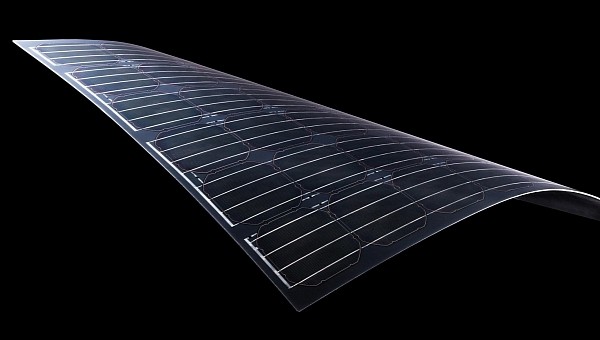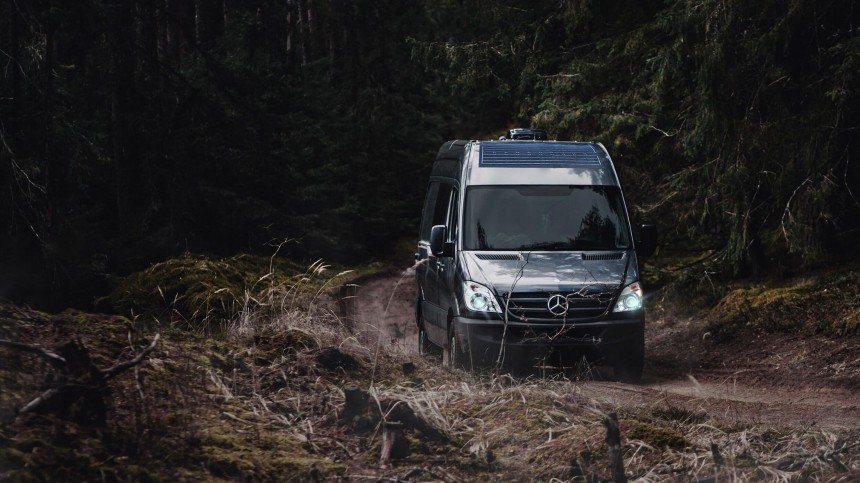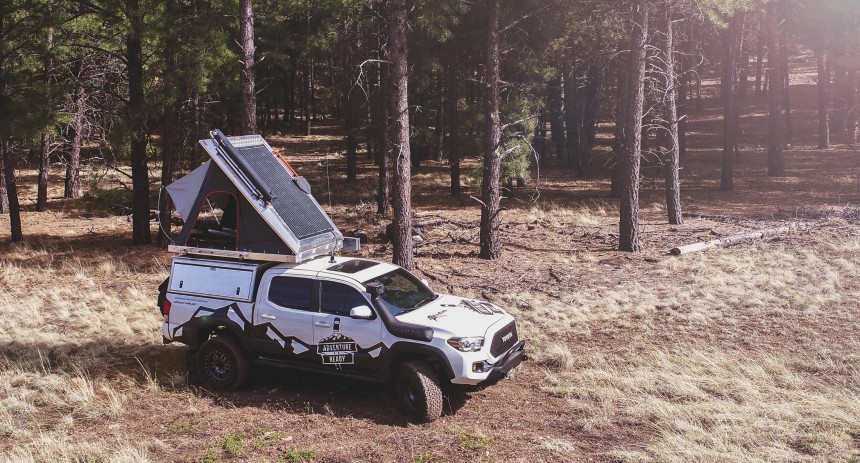There I was, minding my own business, when all of a sudden, an angel appeared, and on his wings, the words Sunflare Xplor. I mean it; what you’re about to learn of may change how you see solar power and when and where you use it - like, uh, always!?
Folks, when I first saw the video posted at the bottom of this article, I literally started to panic. Why? Simply because I saw two dudes, Tony Ellis and Ben Talplacido, with baseball bats sitting against a backdrop filled with solar panels; history tells me that the two don’t mix. Sure enough, after a few seconds or so, we witness the two going to town on different solar arrays. They even bring out an axe at one point.
While all of this may seem like some sort of publicity stunt, it’s actually a setup to showcase Sunflare’s newest product, the Xplor solar panels. Without trying to sound too much like an infomercial, you really need to read this article, watch the video, and then check out how the Xplor lineup can change the way we approach off-grid travels. To put things in as simple terms as possible, what lies in wait for us is a new level of solar panel protection, use, and efficiency.
Now, let me break things down a bit. If you happen to stumble across Sunflare’s website, you may be pressed hard to find precisely when this crew popped up on the market. Frankly, none of that even matters because the work they bring to the RV and mobile living table comes across as that promising.
Starting with the most important aspect of the Xplor panels is the way they’re built. Overall, these panels are built with CIGS (Copper, Indium, Gallium, Selenide) technology instead of the classic silicon we’ve been used to seeing. Then, the layer of CIGS is placed upon a layer of stainless steel and laminated with 3M plastics. Oh, that layer of semiconductors is less than one micrometer thick. To put things into perspective, one micrometer is around 0.000039 inches.
What does that all mean for you? It means less metal to be lugging around and flexible arrays; the steel and polymer are responsible for that, and as for the installation process, nothing more than an adhesive is used to lay these buggers down onto your vehicle no matter where you feel it’s best to do so. Stick it on, wait 48 hours, and off you go.
You can place an Xplor panel on the top of your truck, a roof-top tent, sweeping down onto your cab, wherever you like. If you choose the classic roof-top setup, fear not; the top layer of 3M composite is hard enough to withstand you stepping on them, as long as there’s no debris on the panel or your shoe. Walking around in socks may be the best solution.
Now that we know what we’re witnessing in the video, let’s see why you should ever consider dropping $450 (€415 at current exchange rates) to $750 (€690) on an Xplor array. One way Sunflare ensures maximum efficiency is through the way the panels are built, but there’s more to it than that. For example, each individual cell, not strings, is equipped with bypass diodes. Why does this matter?
Let’s say you have a kayak mounted to the roof of your vehicle. The shade it creates over the panel won’t affect the unshaded cells and will continue to process power. These diodes also help in the eventuality of any damage sustained by one or multiple cells over the course of the Xplor’s lifetime; the rest will keep on keeping on. Sounds like the perfect tech for my clumsy self. Oh, and MC4-compatible connectivity means you won’t need to make any existing changes to your existing setup. I can even use this to run my EcoFlow AC unit and portable generator.
Overall, three panels of varying power are being offered by Sunflare, a 105-watt beauty, 126-watt, and an 180-watt array. With the smallest of the bunch, the manufacturer’s website states that 368-watt hours of daily juice can be generated, but the largest of the three can feed around 630-watt hours of power into your off-grid home or RV. Need more power? Grab more panels. Personally, I find that 750 bones for something like this is a reasonable price to pay.
Again, if you want to see what it means for a solar panel to be built the way Sunflare chose to do so, check out the video I posted at the end of this article and see things from a different angle. Then again, a 25-year warranty should hint at what’s in store for us.
If you too want to get your hands on some of this gear, believe it or not, these fellas are already distributing their gear on an international level. From Canada, through the U.S. and into Mexico, and even Africa has a dealership where you can see things for yourself. I wonder if I should bring my own baseball bat or if they have one in stock.
Finally, this isn’t necessarily new technology; it’s been used in boating and aviation for some time now. However, a new team like Sunflare is sure to bring its best to an already existing industry. After all, you want to make an entrance, secure a podium, and once you do, you better keep perfecting your craft and evolve with the times. I wonder where this crew will be next year and the year after that.
While all of this may seem like some sort of publicity stunt, it’s actually a setup to showcase Sunflare’s newest product, the Xplor solar panels. Without trying to sound too much like an infomercial, you really need to read this article, watch the video, and then check out how the Xplor lineup can change the way we approach off-grid travels. To put things in as simple terms as possible, what lies in wait for us is a new level of solar panel protection, use, and efficiency.
Now, let me break things down a bit. If you happen to stumble across Sunflare’s website, you may be pressed hard to find precisely when this crew popped up on the market. Frankly, none of that even matters because the work they bring to the RV and mobile living table comes across as that promising.
Starting with the most important aspect of the Xplor panels is the way they’re built. Overall, these panels are built with CIGS (Copper, Indium, Gallium, Selenide) technology instead of the classic silicon we’ve been used to seeing. Then, the layer of CIGS is placed upon a layer of stainless steel and laminated with 3M plastics. Oh, that layer of semiconductors is less than one micrometer thick. To put things into perspective, one micrometer is around 0.000039 inches.
You can place an Xplor panel on the top of your truck, a roof-top tent, sweeping down onto your cab, wherever you like. If you choose the classic roof-top setup, fear not; the top layer of 3M composite is hard enough to withstand you stepping on them, as long as there’s no debris on the panel or your shoe. Walking around in socks may be the best solution.
Now that we know what we’re witnessing in the video, let’s see why you should ever consider dropping $450 (€415 at current exchange rates) to $750 (€690) on an Xplor array. One way Sunflare ensures maximum efficiency is through the way the panels are built, but there’s more to it than that. For example, each individual cell, not strings, is equipped with bypass diodes. Why does this matter?
Let’s say you have a kayak mounted to the roof of your vehicle. The shade it creates over the panel won’t affect the unshaded cells and will continue to process power. These diodes also help in the eventuality of any damage sustained by one or multiple cells over the course of the Xplor’s lifetime; the rest will keep on keeping on. Sounds like the perfect tech for my clumsy self. Oh, and MC4-compatible connectivity means you won’t need to make any existing changes to your existing setup. I can even use this to run my EcoFlow AC unit and portable generator.
Again, if you want to see what it means for a solar panel to be built the way Sunflare chose to do so, check out the video I posted at the end of this article and see things from a different angle. Then again, a 25-year warranty should hint at what’s in store for us.
If you too want to get your hands on some of this gear, believe it or not, these fellas are already distributing their gear on an international level. From Canada, through the U.S. and into Mexico, and even Africa has a dealership where you can see things for yourself. I wonder if I should bring my own baseball bat or if they have one in stock.
Finally, this isn’t necessarily new technology; it’s been used in boating and aviation for some time now. However, a new team like Sunflare is sure to bring its best to an already existing industry. After all, you want to make an entrance, secure a podium, and once you do, you better keep perfecting your craft and evolve with the times. I wonder where this crew will be next year and the year after that.












